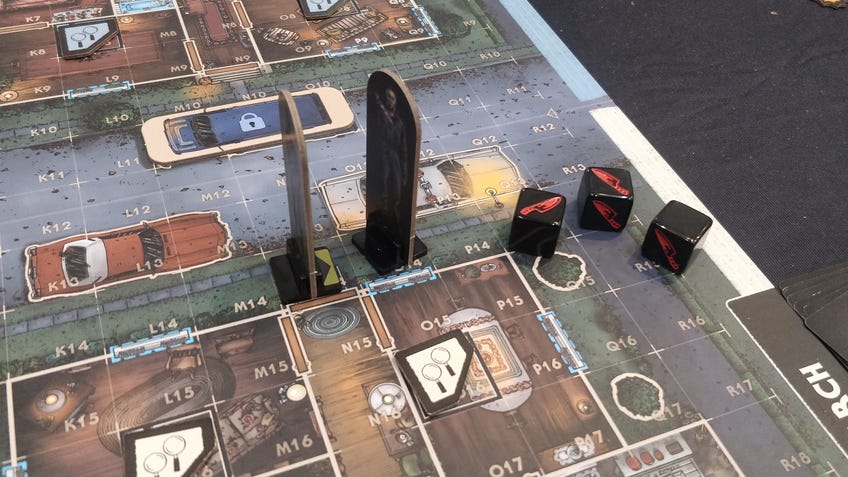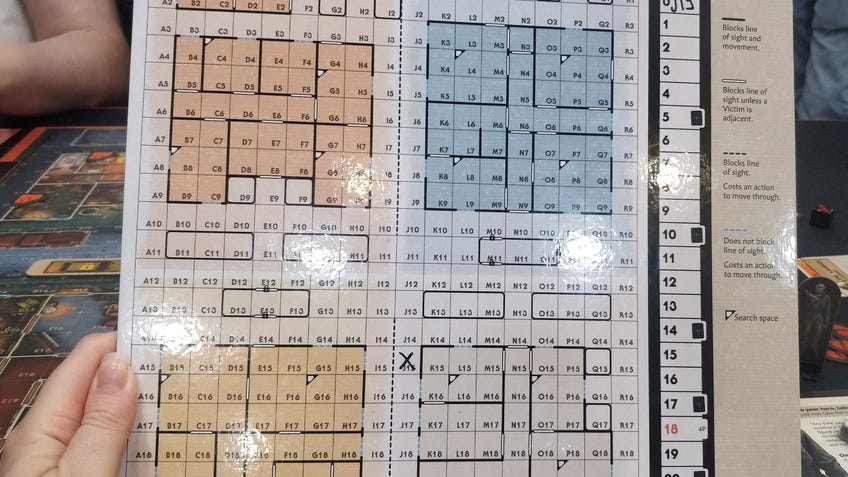The Halloween board game is much better – and scarier – than you think
Escaping Haddonfield is murder.
Movie board games don’t have a great reputation. Despite some recent examples proving that not all of them are bad – such as the various tabletop titles designed by Prospero Hall, including Disney Villainous and Jaws – in general, it still feels like the best you can expect from many licensed board games is that they aren’t awful.
This is not the case for Halloween, the board game based on John Carpenter’s classic 1978 movie. Halloween manages to shake off the shackles of its potential shortcomings as a licensed title and provide an experience that feels true to its source material, as well as being genuinely enjoyable to play.
We were able to play a demo copy of Halloween at Germany’s board game convention Essen Spiel 2023 earlier this month, with the full game set to be released sometime later this year. Designed by Emerson Matsuuchi – who is also working to adapt the Metal Gear Solid series into a board game – and published by Trick or Treat Studios, Halloween appears at first glance to be a very by-the-numbers licensed board game.

It has a board styled after the iconic location of Haddonfield, the sleepy suburb in which killer Michael Myers wreaks havoc in the original film, and standees of Halloween’s key characters such as Laurie Strode – played by Jamie Lee Curtis – and Myers himself. However, Halloween is more than just a shallow recreation of the beloved horror film it’s based on.
Halloween is a one-versus-all board game, meaning that one player is competing against up to three others. In line with the original film, Halloween has the single player controlling Michael Myers whilst the others take command of the rabble of unfortunate teenagers he decides to hunt.
The player controlling Myers can utilise the character’s iconic ability to seemingly disappear and reappear at will to survive.
As the teenagers, alongside Dr Samuel Loomis and the local sheriff, the players are tasked with exploring the streets and houses of Haddonfield in search of at least one pair of car keys as well as Lindsey and Tommy, the two children who are hiding somewhere nearby. Once the players have everything and everyone they need, they’ll have to reach the car before they’re able to escape Haddonfield.
Making their job that much harder is Michael Myers. As Myers, the player has to murder three of the teenage heroes using his kitchen knife. However, the killer isn’t infallible and can be brought down if he takes enough damage. As such, the player controlling Myers can utilise the character’s iconic ability to seemingly disappear and reappear at will to survive.
Pulling off Myer’s risk-versus-reward playstyle feels exhilarating and echoes the character’s behaviour.
The player is able to move Myers across the board without any of their opponents knowing where they are, using a personal grid board to keep track of their movements and current location. This might sound unfair for the other players, but this ability comes with a caveat: Myers is invisible as long as nobody is looking at him. Each standee in the horror board game comes with a base that indicates that character’s current direction of vision. Should Myers ever be standing in line with the direction of another character’s vision, he becomes visible to everyone else. As such, the player controlling Myers must think carefully about where to stop on the board in relation to everyone else.

The player controlling Myers needs to stay close enough to one of their victims to catch them off-guard, but far away enough from the others to avoid being seen. As Myers, the player can charge and strike at another from hiding if they are along a straight line to them, giving them the opportunity for an immediate takedown without allowing the others a chance to fight back. Myers also has the ability to instantly attack any player who walks into their space while they’re invisible. Pulling off Myer’s risk-versus-reward playstyle feels exhilarating and echoes the character’s behaviour from the film in an effective manner.
Despite Myer’s impressive killing abilities, the other players are not entirely doomed. With good teamwork – or in the case of the game I played, poor decisions by yours truly – the teenage heroes can win. The trick is to balance the need to search the houses to find the car keys and the children within the game’s turn limit, with the safety of sticking together. If Myers attempts to take one player down, it’s a lot harder for him to get away with it if there’s another person there to fight him. Furthermore, the teenagers are able to pull helpful items and weapons when searching the houses , giving them another lifeline against the vicious killer hunting them.
Halloween feels well balanced between Myers and the other players, with the advantages of the hidden murderer matching up fairlyagainst those of the plucky team. The upcoming board game is compelling to play thanks to its ability to build and release tension, just like any good horror film worth its salt. Halloween is more than just another way for fans of the movie to get a piece of merchandise, it’s a legitimately killer board game.

